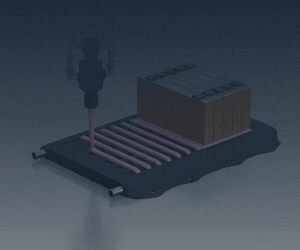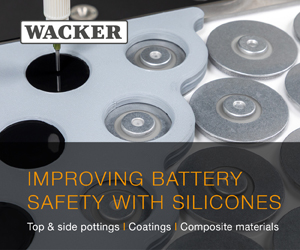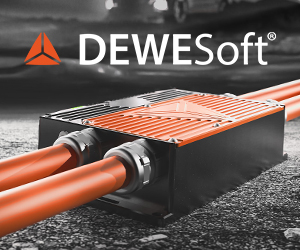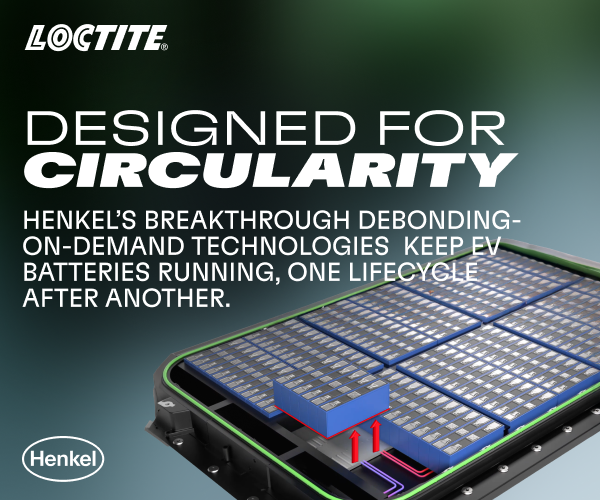Mack Trucks LR Electric
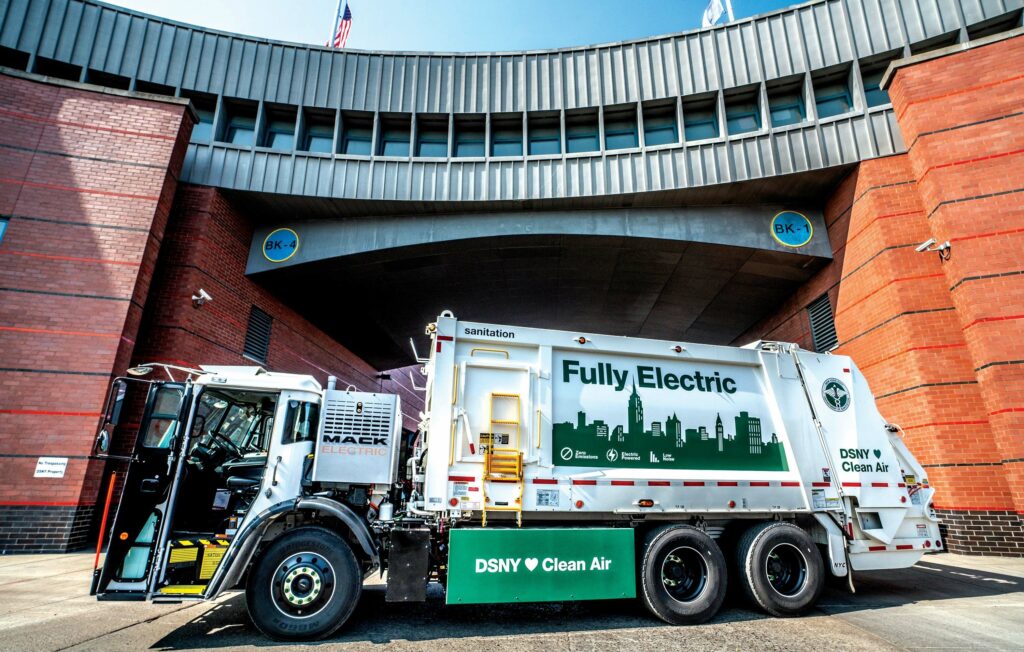
(All images courtesy of Mack Trucks)
Green garbage
Mack Trucks is a market leader in refuse vehicles. So, when a customer came calling for electrification, they immediately rose to the challenge. The resulting revolution was a revelation, Will Gray reports
Heavy-duty vehicles are often the hardest to electrify. Their demands for huge amounts of power and torque to carry heavy loads make them an ideal fit for electric motors, but the need to maximise operational time requires decent range, and the addition of batteries sized to meet that need significantly reduces the payload they can handle.
As a result, the world of recycling and refuse collection could be described by the term agathokakological – a process that is simultaneously good and evil. Clearly, collecting waste and converting it into new materials to conserve Earth’s resources is vital, but doing so while emitting CO2 and particulates in residential neighbourhoods is contrastingly harmful.
Mack Trucks’ industry-leading diesel- or natural gas-powered refuse vehicle, the LR, weighs in at between 19.5 and 32.5 tonnes, depending on its configuration and payload. On a typical daily run, it will be required to cover between 60 and 100 miles, stopping and starting continuously to empty all the bins along its pre-prescribed route.
That stop-start process results in an astonishingly low three miles per gallon average for a typical diesel-engine garbage truck, as calculated by the US Alternative Fuels Data Center. According to the US Environmental Protection Agency, this emits just over 10 kg of CO2 per gallon – equating to 3.3 kg of CO2 per mile, which is 10 times that of the average US car.
At the request of the Department of Sanitation of New York City (DSNY) in 2019, Mack began to explore the potential of eliminating this by electrifying its LR chassis. They immediately struck upon the electric treasure trove of regenerative braking – and soon discovered that with a duty cycle involving so much stopping, there is a lot of energy to gain.
“That’s where the LR Electric [LRe] actually excels,” says the company’s VP of electromobility, George Fotopoulos. “The vehicle makes hundreds of stops per day and the more stops you have, the more efficient it becomes. As a result, it’s not abnormal to have a 25% regen coming back into the battery during a normal day.
“As you put more waste in, the vehicle gets heavier and you get even better energy recovery. It’s also very predictable because every day the truck does a set route, and it does the same routes every week. That was taken into the equation to get us to our engineering formula and the whole stop-start process is a massive two thumbs up.”
The closed-loop operation makes this an ideal sector for electrification and Fotopoulos says that as the refuse vehicle leader in North America, Mack had a duty to deliver and to make things as easy as possible. Consequently, the LRe began with the same chassis and cab platform as its ICE equivalent, a well-established industry leader.
Along with the obvious environmental benefits of zero tailpipe emissions, electrifying the LR platform offered the promise of reduced noise and vibration to create a healthier and safer working environment; instant torque at zero rpm for better operational efficiency; and reduced maintenance and operating expenses to make it cheaper to run.
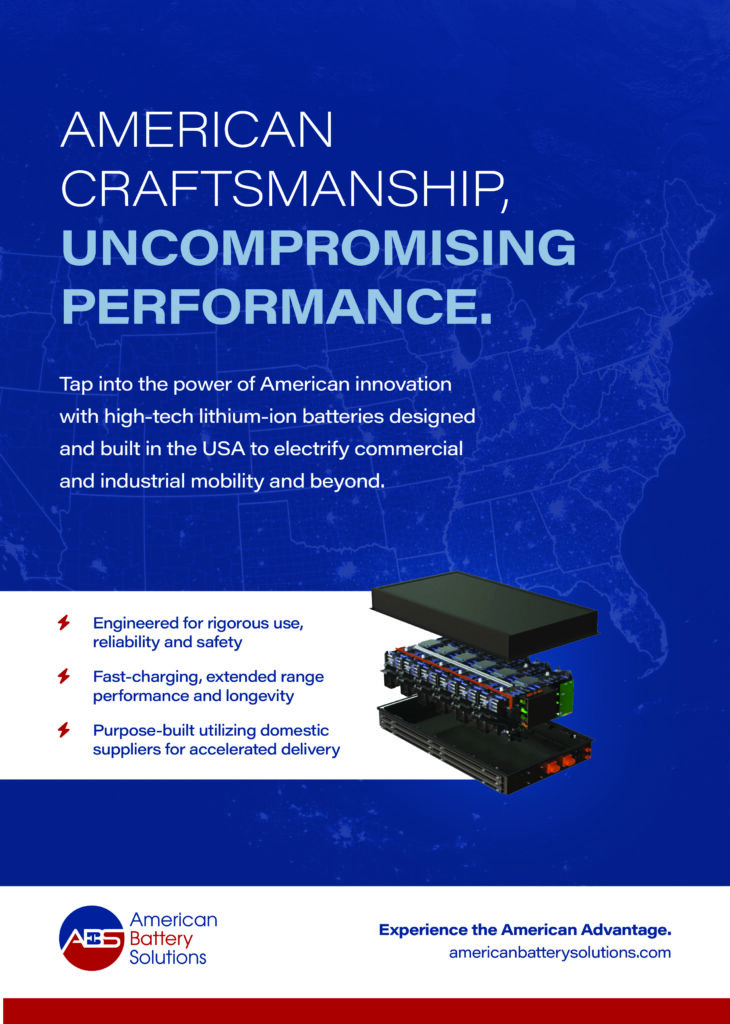
The challenge was in designing a powertrain system that would be capable of handling such a demanding duty cycle, maintaining consistent performance across the speed range and coping with the varying ambient temperatures found in the many different markets that these vehicles serve.
The company leant on the expertise of its owners, Volvo Group – which has been electrifying its products since 2009 – to deliver the conversion. It used that existing product technology as a baseline for its conversion, benefitting from economies of scale and ready-baked efficiencies to take the LRe from prototype to production in just two years.
“We began electrifying our medium-duty trucks in the 20-teens, but the technology wasn’t robust enough to handle this type of heavy-duty truck,” recalls Fotopoulos. “The batteries and EV motors needed to evolve because we needed a lot of torque and horsepower for this application, so we had to wait for it to mature.
“Our engineering playground involves all sorts of applications. The thought of hybridisation was there, but at the end of the day, we thought why complicate it with two systems when you can simplify it with one very efficient system? The application was perfect for fully electric technology; so, when it was ready, we implemented it.
“We used a lot of the common architecture and shared technology from the Group, and this is not actually the first-generation battery. We started this vehicle off on the Group’s generation two unit and have already upgraded it to a generation three, which offers 42% more power. That shows how quickly things are moving in this space.”

The original design for the Mack LRe refuse vehicle chassis
Powertrain development
At the heart of the LRe is a pair of AC motors, coupled to a two-speed transmission optimised for this very specific heavy-duty refuse use case. Running on 600 V architecture, the motors drive two sets of rear wheels, providing 334 kW (440 bhp) of continuous power, peak power output of 400 kW (536 bhp) and 4050 lb-ft of torque.
The two units are integrated into their respective housings within the existing baseline chassis and mated to the transmission. They are designed to be independently replaceable, and with no other equipment around them to get in the way, it is a far simpler setup than is found in the ICE version.
The way the motors are managed is key to the vehicle’s operation and Fotopoulos explains: “We have 100% of torque from zero rpm to 3500 rpm. Then, at that point, you don’t need torque, you need horsepower. So, the torque starts to drop off and from 3500 rpm to the limit of 10,000 rpm, we have 100% horsepower.
“The two motors go into the geared system, and that drives the two rear axles. It looks like a combined unit, but it’s actually modular – there are two motors and a transmission mated together in the centre of the chassis, with a prop shaft that goes back to the traditional axis to provide the drive.”
The transmission’s two-speed shift is software-driven with the change point determined by the vehicle’s overall speed. This is typically around the region of 20 to 25 mph but will depend on various factors that feed into the software, including the environment, the level of incline up or down and the weight of the payload onboard.
The two electric motors are set to always run at different speeds, with different gear ratios that are specifically designed to optimise harmonics and minimise noise and vibration. Fotopoulos continues: “Motor number two always runs at the same speed using a ratio of 3.67, but motor number one changes speed, depending on the gearing.
“In gear one, it has a ratio of 9.26, so it runs at approximately three times the speed of motor two. In gear two, it comes much closer to motor two, with a ratio of 3.52 compared to motor two’s 3.67, so the two run at marginally different speeds. It’s a very little difference, less than a thousand rpm but it keeps everything in harmony.”
Each motor has its own electric motor drive – or its own brain, as Fotopoulos describes it – and the modular layout supports easy replacement if necessary. In fact, in the case of a motor failure, the split architecture even allows the software to adapt and run the remaining motor independently, albeit at lower power, to enable an emergency ‘limp-home’ mode.
In comparison to its ICE equivalent, the electric version has more power, faster acceleration and, from a driver’s perspective, much improved overall performance. It is also significantly more efficient, and Fotopoulos notes: “The LR ICE has an efficiency of about 55,600 BTUs per mile, while the LR Electric is 15,300 BTUs per mile – so it’s almost 400% more efficient.
“When it comes to cost savings, that brings in a significant upside. Based on market pricing in the US – with a cost of $4 per gallon for diesel and an electricity rate of 12 cents per kilowatt – and assuming it follows a typical regeneration model for a refuse heavy-duty truck, it can achieve up to 70% reduction in fuel cost savings.”
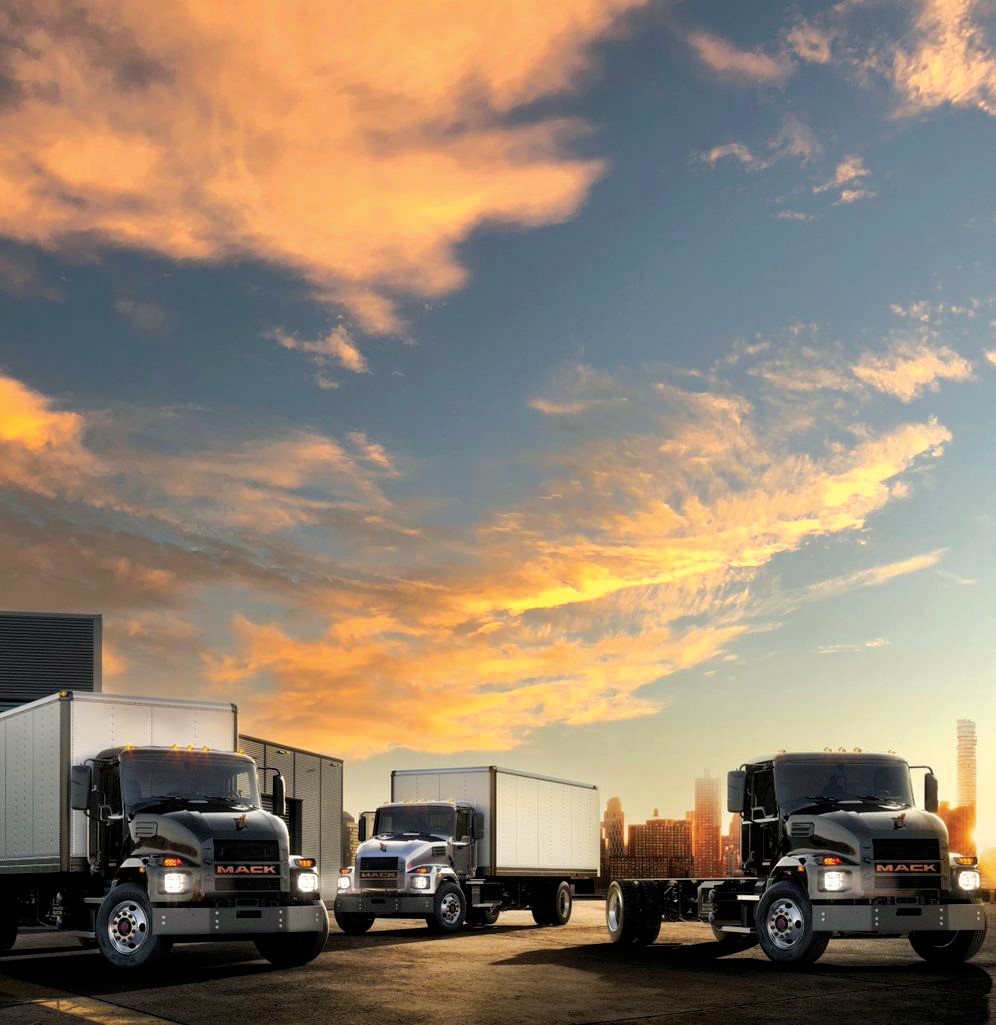
Battery and charging
The latest version of the LRe uses Volvo Group’s generation three nickel magnesium cobalt (NMC) battery, which offers improved chemistry, pack design and cell density over its predecessor. This increased the available power from 264 to 376 kW and did so in the same space, for the same cost and, in relative terms, with more or less the same weight.
The battery architecture moved away from cylindrical packaging to a prismatic form factor – which Fotopoulos describes as “AA versus 9V – because one is square and one is round.” The set-up is configured in four individual blocks – officially known as Energy Storage System (ESS) packs – to optimise packaging within the existing chassis layout.
“We have two on the side of the chassis and two behind the cab in the gantry,” he explains. “That helps packaging but also weight balance. There’s only so much real estate in the truck, so we wanted to optimise that real estate to fit all the components and having one huge battery is just not accommodating.
“Even when we develop a new platform, I think we would still do a modular set-up for the batteries because these trucks have different configurations depending on the use case – a rear-loader or side-loader application. You want to configure the batteries to optimise to the given application, so I don’t think you’d ever want one mega battery in the centre.”
The battery capacity has been sized to provide a range that avoids the need to charge on a duty cycle, although it is capable of up to 150 kW DC level-three fast charging if required, using industry standard J1772 5-pin communication. The charging curve runs at full capacity for a wide range of 10–70%, tapering off gently up to 100%.
One of the biggest considerations during the development was the balance between power and weight – or more specifically, payload. This is a vehicle that earns its keep carrying heavy loads, so minimising vehicle weight and maximising payload is vital to deliver a solution that is attractive in what can be a highly competitive market.
The resulting capability of the LRe is a payload of up to 11.5 tonnes (25,500 lbs), with a Gross Vehicle Weight Rating of close to 30 tonnes (66,000 lbs) – taking it into the Class 8 heavy-duty category. There is even an option to ‘go large’ with a 32.6 tonne (72,000 lbs) truck that accommodates an even greater payload weight.
“Payload is the moneymaker of the customer, so we wanted to make sure we were meeting their requirements in that area,” says Fotopoulos. “Our engineering technology strategy had to consider the factors of a triple-bladed sword: the vehicle only has so much space, it can only bear so much weight and the customer can only bear so much cost.
“We wanted to maintain durability and dependability, so we didn’t want to take a cab that was steel and make it aluminium to reduce its weight. The aim was to take that durability and dependability and electrify it. So, because weight was a big part of the equation, we had to take that into consideration and deal with it a different way.
“We could try to put a megawatt of power on, but can you imagine what the payload and the cost would be to do that, and would we even have the space? Ultimately, the biggest weight component in the chassis is the batteries and the density advantages of NMC chemistry over LFP [lithium iron phosphate] definitely came into the equation to help us get to that target payload.”
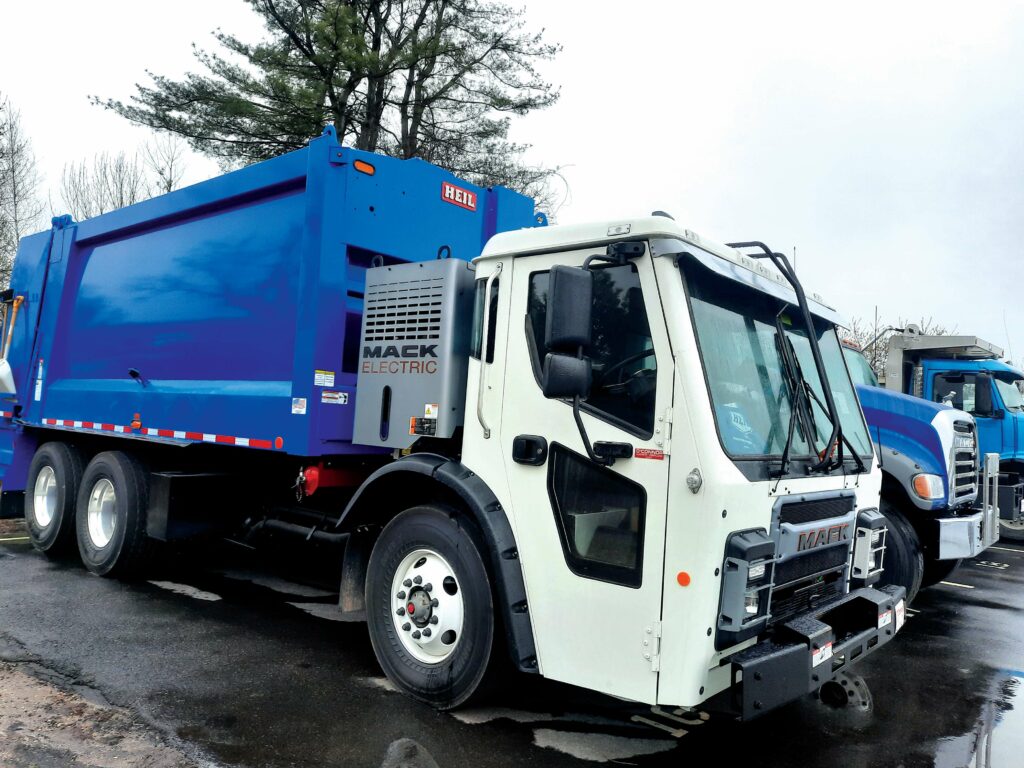
Regeneration
The basic laws of physics and momentum dictate that a vehicle requires more power to get it moving than to keep it moving. So, the stop-start procedure, with its high-torque acceleration and intense regenerative braking, places greater demand on the battery than a normal blend of slow-, medium- and high-speed operation.
The greater pack density in the ESS packs adds an even greater challenge from the internal build-up of heat. So, delivering the performance required for a Class 8 application, without overheating the battery, required significant innovation. The system uses a standard coolant but the creativity comes in the vehicle’s active software systems.
“Putting kilowatts in or pulling kilowatts out heats up the battery, and this vehicle is doing this constantly for long periods of time,” explains Fotopoulos. “We’ve chosen components that can handle the rising temperatures in this demanding application, and we manage them through basic cooling and our bespoke thermal management system software.
“The battery temperatures are maintained and monitored constantly, and the system knows the state of health for each of the cells themselves, as well as for the battery packs as a whole. That allows us to monitor and manage the temperature around those systems accordingly, and the software plays a big part in keeping things at the right level.”
The regenerative system has three different modes – high, low and automatic – as well as an overall on-off switch for the system. “The high setting is for later in the route, when you’re running with heavier loads,” explains Fotopoulos. “With more weight onboard, the forces that you are trying to decelerate are greater, so you can handle greater regen.
“The high setting gives more regen capability, so you’re getting more kilowatts back into the battery pack, but when the truck is running empty, you would choose to manually select low because without as much weight onboard, the high regen would create quite a hard braking action when you let off the accelerator, and that is not a very pleasant driving experience.
“Our auto mode is not, as most people think, to automatically switch between high and low settings, it’s actually a separate mode for highway use. It allows you to coast the vehicle, with regen only coming on when you start pressing the brake pedal before the pneumatic braking starts, and that creates a more pleasant highway driving experience.
“Finally, the on-off mode is a safety measure because when its slippery – be it ice, snow or sometimes even rain, depending on the surface you’re driving on – it allows you to turn off the regen and be able to roll down a hill, for example, and keep more control rather than risking the regen coming on and causing you to lose traction.”
The software continually monitors vehicle operations, and this enables owners to monitor their use and better understand their specific duty cycles over time. It also enables Mack to evaluate that performance and develop software updates that can fine-tune the vehicle’s performance over the course of time.
When the company introduced its newest model, which included the generation three battery, existing customers were offered an upgrade kit to replace the old battery units. This came with a software upgrade to accommodate the dynamics of the newer system, and the promise of a significant upscale in power led to an uptake rate of over 50%.
That approach could be seen as wasteful if the old batteries were simply discarded, but Volvo Group made sure they were put to use, and Fotopoulos reveals: “We have a division called Volvo Energy, and one of the solutions it provides is a Battery Energy Storage System [BESS] – I like to call it a battery in a box.
“It’s an alternative to a diesel generator, enabling you to bring in power to an off-grid site – so the batteries that were removed from our customers’ vehicles were given a secondary life in those BESS units. Maybe there’s even a third life after some reconditioning, but we certainly don’t recycle them right away.”
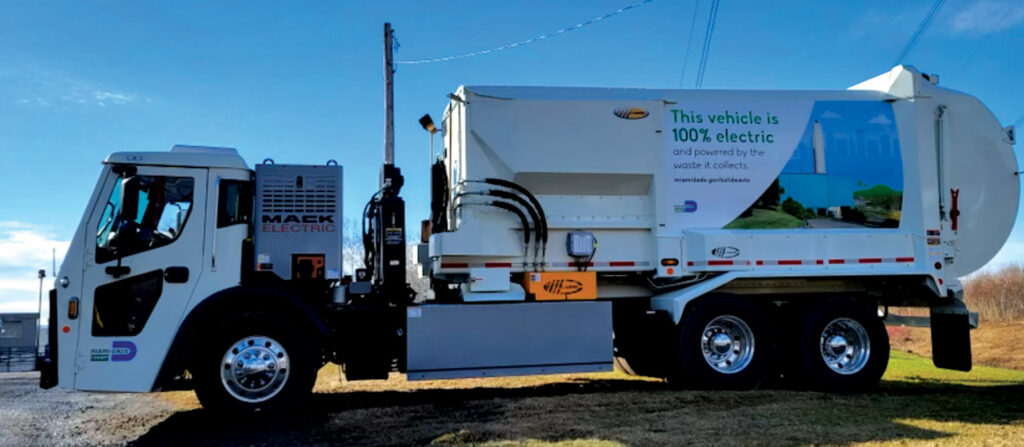
Operation
Given that this vehicle is typically purchased and used by state-run authorities, with a use case that requires it to be operated in urban locations, safety was one of the most important criteria on the design specification. To meet stringent requirements, Mack decided to go beyond expected industry standards and implement a four-stage safety system.
“The wires are coloured orange to stick out – so the first rule is do not touch orange,” points out Fotopoulos, before going on to outline the actual safety systems. “Safety is the utmost importance in all our products, we tackle that with redundancy, so the systems we incorporate are comprehensive in electrical protection protocols.
“The first aspect, which is an automatic preventative, is the High Voltage Interlock Loop. This is a loop circuit that monitors all the connections and circuits in the 600 V powertrain system. If it senses any interruption whatsoever, the traction batteries will be disconnected within milliseconds. That is the number one safety protocol that we have.
“The next is the automatic preventative whole battery temperature monitoring system. This keeps a constant check on everything and provides feedback to the user, from simple warning lights and messages, through de-rating and right up to telling the driver to pull over immediately and shut down the vehicle. Those systems are built in and trigger automatically.
“Next, when it comes to the more manual aspects, there is a high-voltage disconnect that can be operated from the outside of the chassis. It’s operated by a disconnect switch, located on the left side of the vehicle, and as soon as that is switched, the high voltage gets dispelled within the system itself.
“The final manual safety feature is for first responders. To assist them to quickly disable the vehicle, there are clearly labelled low-voltage wire cut points throughout the truck. They are typically around the batteries, and as soon as you clip one of those low-voltage wires, it fully disconnects the 600 V architecture.”
Those safety aspects also lean into the cab design, with the stand-up and sit-down options designed to maximise worker flexibility. The multiple door configurations include standard doors that open with hinges; doors that flip up in half; and bifold doors that split in half vertically and fold into the front and rear of the cab.
The latter – which was requested by original customer DSNY – results in a fully open cab side, preventing the need for the doors to open and close whenever a refuse collector needs to exit the vehicle. To maintain occupant safety, the team designed another seatbelt on the C-pillar, which once pulled across, must be pressed to exit the vehicle.
The units also have a steering wheel on each side of the cab, which is mainly for residential pick-up in the US. Unlike UK refuse collectors, who jump out of the vehicle to collect and fit the bins to the actuators, the US teams operate with a single driver and use Automatic Side Loaders (ASLs), which extend an arm out from the truck to collect and empty each bin.
“Operators want to be on the right-hand side to see that bin,” explains Fotopoulos. “They need to see the arm to manoeuvre the hydraulics or the actuators to pick it up, and that is why we have the capability of dual-sided drive. There’s a toggle switch in the middle of the console, so you can’t use the controls or pedals on one side versus the other!”
All of these features are also included in the ICE version of the vehicle – some as standard, others as options – but one operator benefit that is truly unique to the LRe is the reduced noise and vibration delivered by the electric powertrain. This is not only an advantage for the operator, it also makes things more pleasant for those on the daily route.
Fotopoulos explains: “The improved working environment means the drivers are able to be more aware and attentive to what is happening in their surroundings, and the external noise reduction is also a particular benefit to the residential neighbourhoods, particularly those who are on the early morning part of the run.”
Having such a heavyweight vehicle running on silent electric power could be a danger for those who may not hear it coming, but with the continued use of pneumatic systems, it is still far from a silent operation. If required, simulated noise can be added using a noisemaker, and the company has done so once on customer request.
Fotopoulos says that the feedback from early operators is hugely positive. He sees the fact that they enjoy using it so much as testament to the wider benefits of electrification – and that includes one rather unexpected bonus that has even improved the efficiency of the humans involved.
“We collect a huge amount of data points on our telematics gateway from the vehicles on their daily runs, and we have a platform that allows us to share all that connected data with the customers,” explains Fotopoulos. “They can then use that data for driver coaching, reward systems or even cost reductions – and sometimes use it to gamify their operations.
“We don’t have any integrated driver aid coaches on the instrument panel, but as with many electric vehicles, the dashboard does have a real-time driving gauge. It shows the percentage of power you’re utilising, noting a minus if you’re regen braking or a plus if you’re utilising power – and some drivers used that to make their day more fun.
“In fact, some have even turned the regenerative braking technology into a bit of a game. They look for their next bin and let off the throttle at a certain point to try to stop the vehicle with as little applied braking as possible! They said it made their day fly by – and it’s an interesting benefit that I never thought I’d hear!”
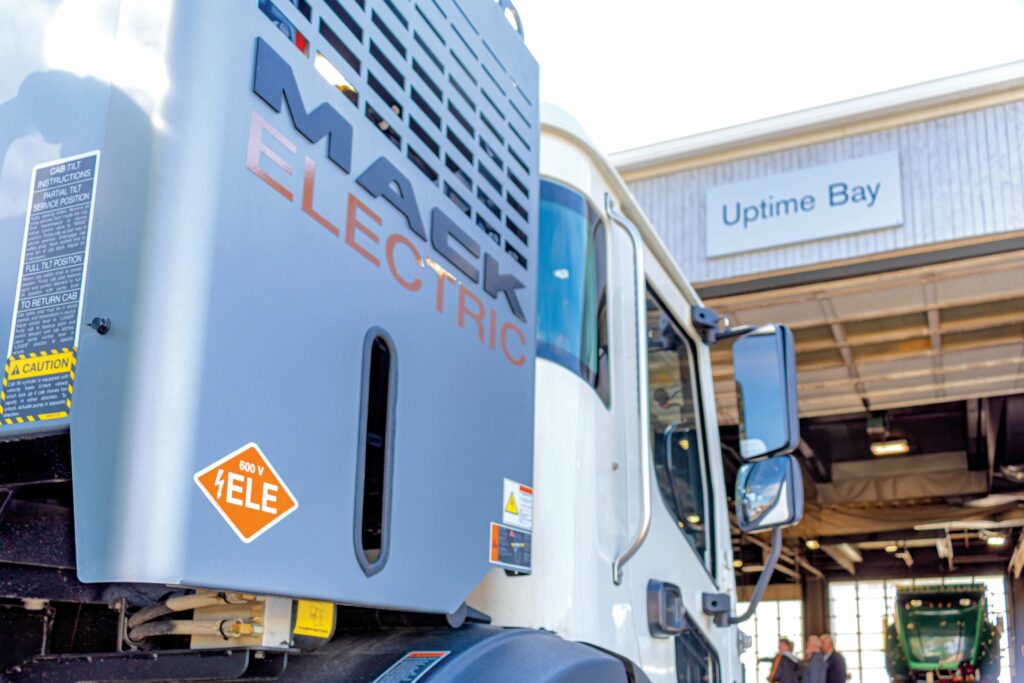
Body configuration
The LRe, it is important to note, consists of just the chassis and cab unit. The actual garbage-munching body is a separately sourced item, and Mack has deliberately worked to be body agnostic, enabling a wide range of third-party suppliers to offer solutions that can be fitted to their electric platform.
This presents the added bonus of being able to switch from a diesel version to an electric model without having to replace the whole body of the truck – and part of the company’s work in developing the electric version has been to collaborate with some of those body suppliers to seek combined efficiencies from the vehicle’s total electrification.
“There are bodies out there that are 100% electric and use electric actuators, and that can bring some added efficiency, but the majority of bodies in the industry are still hydraulic,” says Fotopoulos. “That hydraulic system requires a pump to move the fluid, so we have an electronic power take-off [EPTO] that we can connect up to it.
“The chassis is fitted with an electric motor that spins up and can pump the hydraulic fluid for the refuse operations. That means the whole system can still be fully electric, even with a hydraulic body, but we can also direct-tap into our electrical architecture to run an electric actuator body if the customer chooses to.
“I don’t have the detail around the efficiency gains, as we’re not the manufacturer of those bodies, but the percentage efficiencies when it comes to an electric actuator system versus a hydraulic system are likely to be the same as an EV powertrain compared to an ICE unit, so I would say the power draw is less with an electric actuator body.
“The other benefit an electric actuator body can offer, in some cases, is its own integrated battery. That then means the operational aspects of running the vehicle are powered by a battery separate to the chassis, creating less demand on the power from our side and allowing the vehicle to go further on the same amount of charge.”
Fotopoulos says his team is working together with many different manufacturers to integrate new bodies onto the chassis in the most efficient way. That includes the industry leader, Heil, which has developed the RevAMP eASL body, which is a fully electric automated side loader with a self-contained power source.
According to Heil, this body can significantly increase the range of the electric chassis and also reduce maintenance by eliminating hydraulic liquids. It can service up to 1200 homes per day using its independent 46 kWh battery, but it can also be integrated into the chassis using a common battery pack with single point of charge.
Efficiency is improved throughout the refuse collection process. The auger requires less energy than a typical compactor ram and can be cleared more quickly; the lift arm has an eight second cycle time, with remarkably quiet and smooth operation to reduce driver fatigue; and the ejection panel is also efficiently driven by an electric motor.
Canadian firm Boivin has also hit the market with its EVolution body, a 100% electric arm lifter with a 10 second cycle time and an electric auger compactor. Also designed with a 46 kWh onboard battery, this extra-light body, weighing in at less than 7.4 tonnes (16,400 lbs), aims to maximise payload and optimise efficiency.
Its LiNMC high-density battery technology is lightweight, compatible with 240 V AC on the J1772 system and allows quick recharging, taking between four and eight hours on a Type 2 station. Powered heat pads are installed in the battery pack to maintain the battery at its best working condition and temperature.
Mack has also worked with McNeilus to integrate their EPTO into its chassis. Instead of utilising the chassis’ electric motor to run the hydraulics, the body has its own electric motor that simply uses power from the battery on the chassis. That requires software and integration work, but it brings significant benefits for both parties.
“We have worked with a lot of different body manufacturers and there are some other bodies that we’re integrating in the near future, but they’re just not running quite yet,” continues Fotopoulos. “Running an EPTO is not an easy task, though. It’s not a plug-and-play, and there is always integration work that needs to happen with the body manufacturers.”
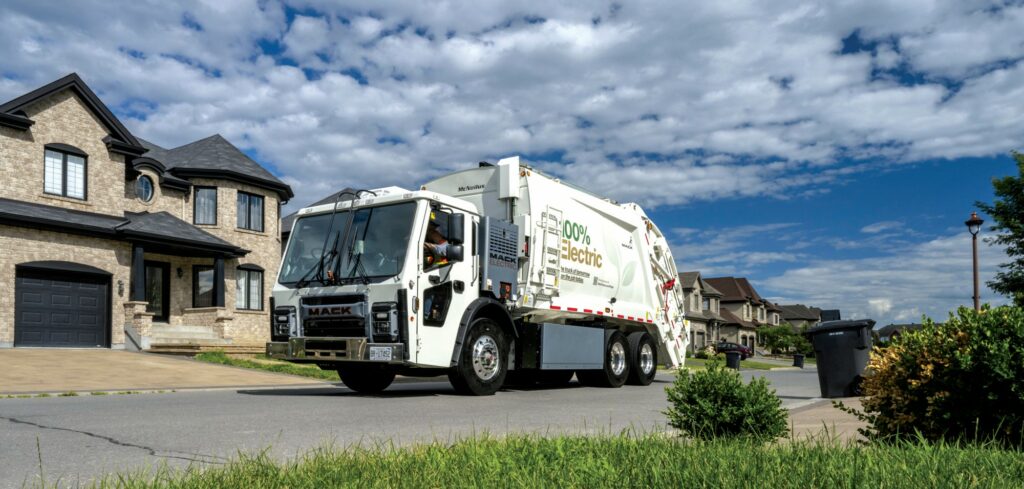
Into the future
The first LRe – which features a copper-coloured Bulldog ornament to represent the fully electric drivetrain, went into real-world testing in New York with DSNY in September 2020. The city’s demanding environment made it the perfect place to evaluate the latest advancement and it was green-lit for production a year later.
The final result is a vehicle that looks very familiar to users of the ICE version, with just a few small visible differences inside the cab – for example, the gauge cluster has a power meter showing kilowatts of energy consumption and the shift control has just two simple rocker switches instead of the usual shift pattern.
On the exterior, the battery packs are clearly visible, with two on the rear of the cab and two on the chassis, on the frame behind the wheels. All the power electronics are packaged under the cab in a unit called the Modular Power Box (MPB), located in the space that was previously occupied by the diesel engine.
The MPB houses the central charging unit, a traction voltage monitoring unit, electric control units, fuse panels, a relay centre, a junction box, 12 and 24 V batteries and DC-DC converters for the three electrical circuits – 12 V for in-cab accessories; 24 V for air compressors, power steering and air conditioner; and 600 V for drive motors and the EPTO.
The thermal management system is mounted on the front of the assembly and the LRe uses the same radiator as its ICE equivalent, but with electric-powered fans instead of a diesel-driven solution. The two motors and transmission sit within the central spine of the chassis, providing power directly to the two rear axles.
If successful, the LRe, combined with the electric actuator-driven garbage bodies, will eliminate that aforementioned agathokakological issue with recycling and refuse collection by delivering emissions-free operations. So far, however, sales have been slow, and Fotopoulos acknowledges this is often the case with early adopters.
The fact that most customers are from the public sector, with ever-tightening purse strings and priority targets that do not yet focus fully on sustainability, adds to that challenge. However, Fotopoulos is confident that Mack can drive greater appeal by offering an industry-changing e-mobility full-service solution.
“We are developing an ecosystem that covers the full A to Z,” he says, explaining that Mack’s electric offering goes far beyond the chassis itself and the third-party body integration, to include specialist servicing, charging solutions, telematics, grant services, financing and consulting, all in an effort to make it more appealing for take-up.
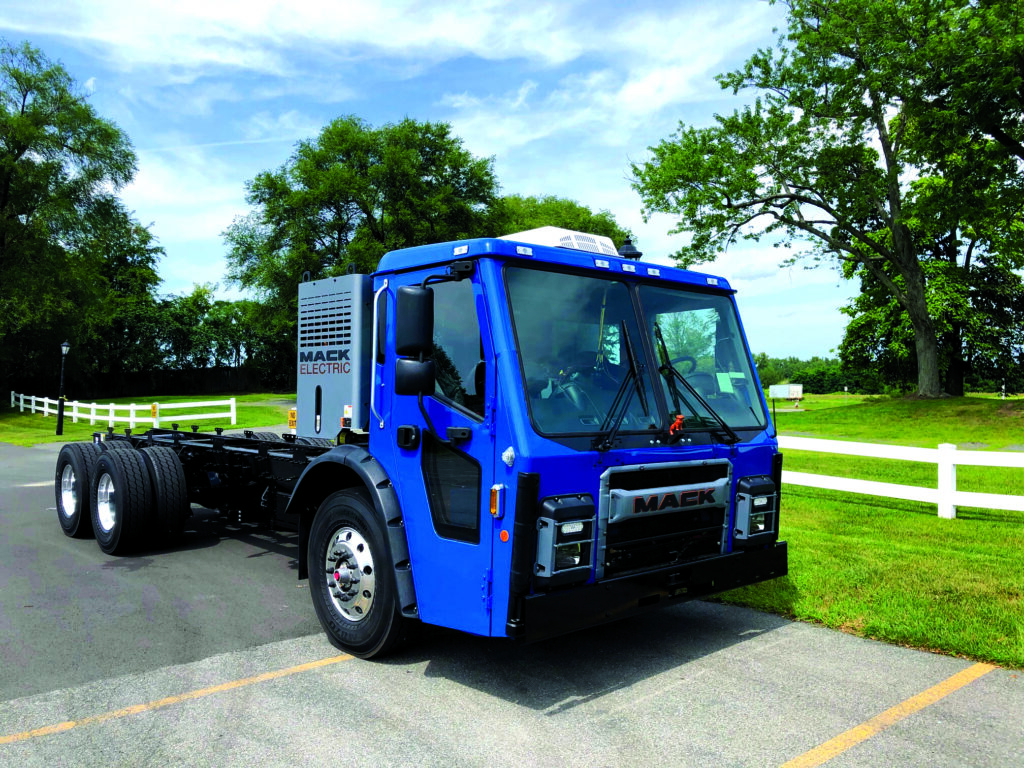
“That’s all very much part of the offer in the equation for electrification,” he continues. “We’re definitely not in this solo. Progressing this electric technology requires partnerships, and we are working as an industry as a whole, along with the supply network and the fossil-free energy utility companies, to accelerate adoption. It’s quite a collaboration!
“Return on investment and total cost of ownership is a big part of the purchase decision, so we have tried to bring down the initial capital cost on these electric versions. We looked at battery leasing, but it wasn’t mature enough for the industry to think like that quite yet, but we’re being very creative on our financing by starting a leasing approach.
“We’ve never leased a refuse truck before – that was unheard of in the industry – but we now finance and lease that and the other assets that go along with the EV equation, too. The body is another expensive part of the picture, so we lease other OEMs’ components; the charging infrastructure that’s required. We’ll even do the copper in the ground.
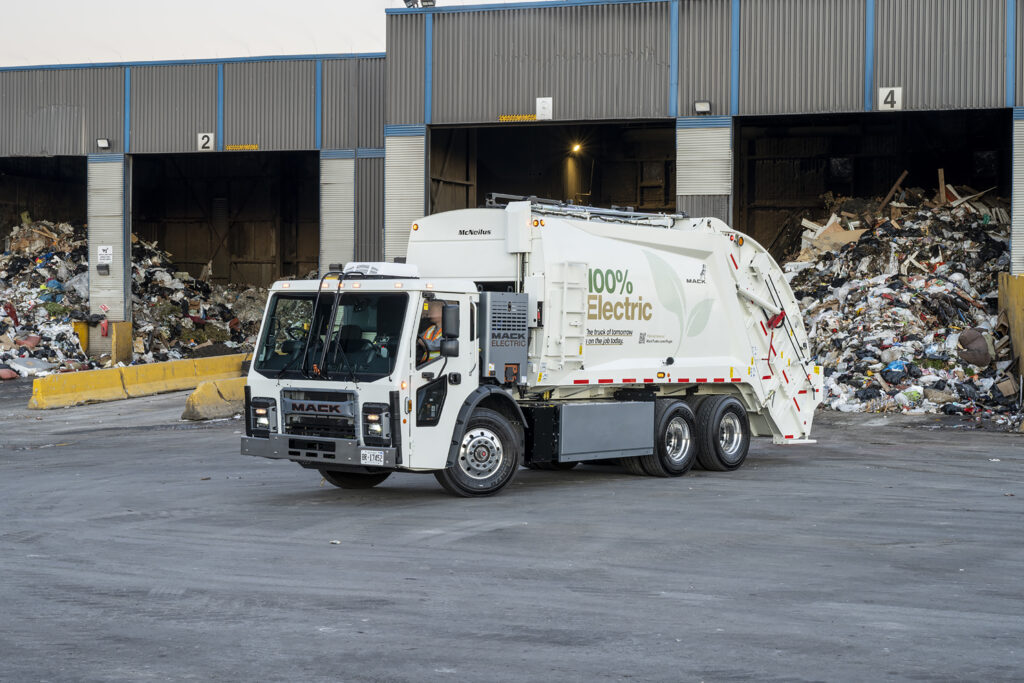
“We also have a dealer partner network out there of 400+, and we have equipped them to work on these vehicles for maintenance and servicing. We have an EV certification process that covers safety, tools, equipment training and protocols and concludes with a rigorous certification process to work on our electric vehicles.”
The LRe is an early step in the electrification of heavy-duty vehicles, and Fotopoulos believes further improvement will come, particularly in the form of battery development. That could be new chemistry, or new form factors, and he concludes: “I believe in engineering, and the future is endless when it comes to potential advancements.
“We will progress in the EV technology transition in stages, over time. We already have a medium-duty truck that is fully electric, the MD Electric, and we recently announced plans to get into the regional highway tractor space soon. So, we’re progressing through the use cases of electrification in the industry.
“People who bought the LR Electric often say this is the best-performing and most reliable truck in their fleet. I love hearing that; it’s awesome! And we will continue to advance our electric mobility applications and products across the range, but only where and when it makes operational and economic sense to do so.
“We’re doing what we can, and although the adoption curve in North America is a slow burn, we believe the LR Electric represents a growing segment in the industry and that as fleets start to recognise the significant operational benefits of electric refuse vehicles, the take-up rate will grow. Changing the world is not easy, but we’re ready!”
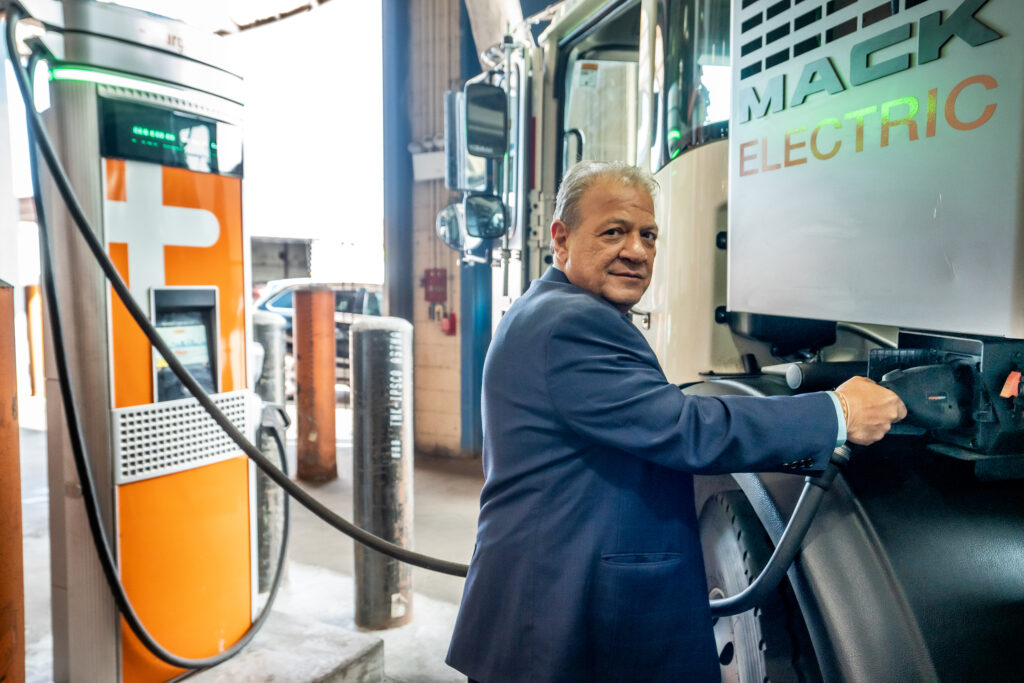
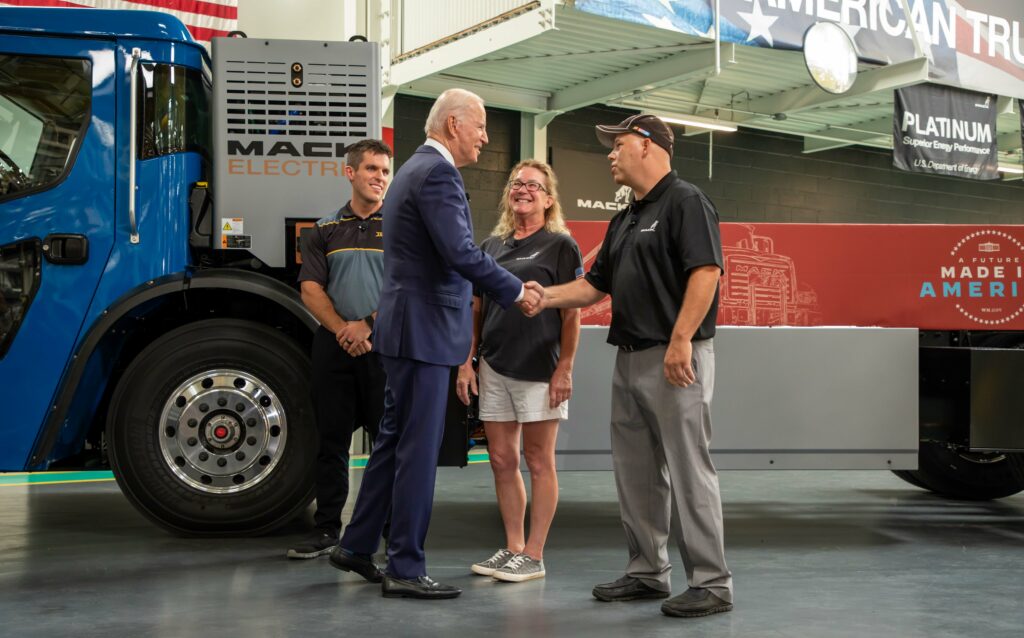
Specifications
Performance
Range: Up to 100 on-the-job miles (including regen)
Payload: Up to 25,500 lbs
Peak torque: 4051 lb-ft
Peak power: 400 kW (536 bhp)
Continuous power: 334 kW (448 bhp)
Charging: 120 minutes at 150 kW
Consumption: As low as 0.3 kWh/ton-mile
Technical
Vehicle type: Class 8
Motor: Twin AC permanent magnet synchronous motors
Battery: 4 x NMC lithium-ion batteries (lithium nickel manganese cobalt oxide)
Transmission: 2-speed Mack powershift
Axles: Mack FXL20 20,000 lb front axle; Mack S462R 46,000 lb rear axles
Suspension: Mack mRIDETM 46,000 lb suspension
Charging: Up to 150 kW with a max current of 200 A, 550–750 V (SAE J1772 compliant)
Power circuits: 12 V, 24 V and 600 V, 260 A
Braking: Three-mode regenerative
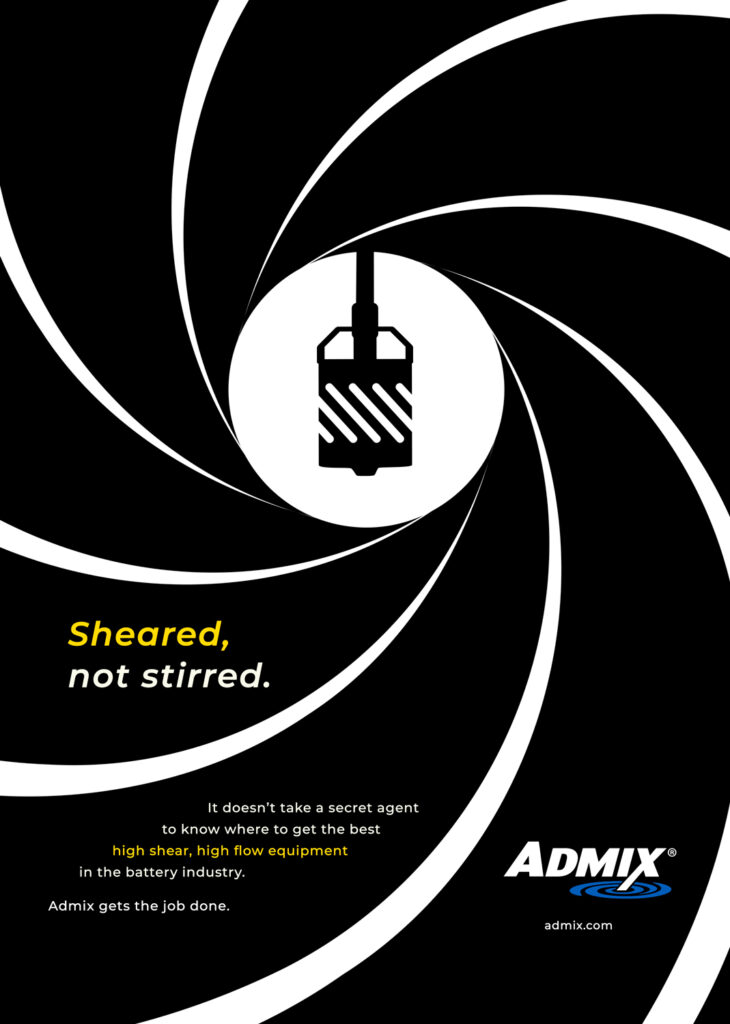
Click here to read the latest issue of E-Mobility Engineering.
ONLINE PARTNERS















